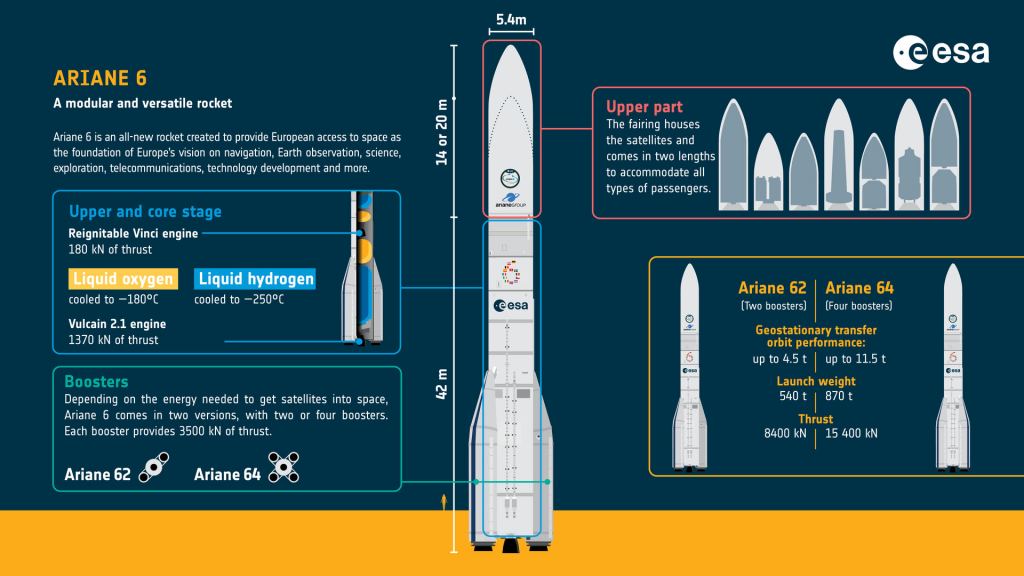Europe's next-generation Ariane 6 rocket rose today for the first time from its South American spaceport, ending a yearlong launch gap caused by the Ariane 5's retirement.
The heavy-lift launch vehicle's demonstration flight began with liftoff at 4 p.m. local time (19:00 GMT) from the Kourou spaceport in French Guiana, and continued with satellite deployments in orbit.
"A completely new rocket is not launched often, and success is far from guaranteed," Josef Aschbacher, the European Space Agency's director general, said in a statement. "I am privileged to have witnessed this historic moment when Europe's new generation of the Ariane family lifted off – successfully – effectively reinstating European access to space."
ESA and its partners have been working on the two-stage Ariane 6 since the early 2010s as an upgrade to the Ariane 5 series, which lofted more than 100 spacecraft (including NASA's James Webb Space Telescope) into orbit beginning in 1998. Ariane 6 development cost is estimated at nearly $4 billion.
The first Ariane 6 was originally planned for 2020, but technical issues and the COVID-19 pandemic forced delays. After last year's final Ariane 5 mission, Europe's launch industry could offer only the Vega small-lift launch vehicle, leaving a gap in the medium- to heavy-lift market.
The market for the Ariane 6 is dramatically different from what it was when the Ariane 5 entered service more than a quarter-century ago. Thanks to SpaceX and other commercial ventures, rocket reusability is becoming the standard in the industry --- raising questions about how competitive non-reusable rockets like the Ariane 6 can be.
ArianeGroup, a joint venture between Airbus and Safran, is counting on Ariane 6's success. But in January, The Financial Times quoted Aschbacher as saying "there is no guarantee" that ArianeGroup would continue to be Europe's launch company of choice.
The Ariane 6 line features a modular design that can be adapted for missions to low Earth orbit or to deep space. For today's mission, known as VA262, the rocket's core stage was augmented by two side-mounted solid rocket boosters. Another configuration calls for four strap-on boosters for heavy-lift missions. The four-booster configuration can deliver up to 21.6 metric tons to low Earth orbit.
Today's launch sent the Ariane 6's upper stage to an altitude of about 600 kilometers (373 miles). Nine satellites were deployed, and five onboard experiments were activated.
Another objective involved demonstrating the upper stage's ability to relight its Vinci engine for orbital adjustments and deorbiting. Two experimental re-entry capsules were supposed to be released as the mission wound down. But in an update posted to the X social-media platform, ESA said the technology demonstration phase showed "an unexpected result which will only affect the end of the mission."
During a follow-up briefing, mission managers said the upper stage's auxiliary power unit suffered an anomaly that caused a premature engine shutdown. As a result, the re-entry capsules were not released, and the upper stage remained in orbit.
The next Ariane 6 mission is scheduled to put France's CSO-3 spy satellite into orbit later this year. About 30 Ariane 6 launches are said to be booked already, including 18 launches for Amazon's Project Kuiper satellites. Arianespace CEO Stéphane Israël said today's end-of-mission anomaly would have "no consequence on the next launches."
"We are perfectly on track now to make a second launch this year," Israël said.
 Universe Today
Universe Today

